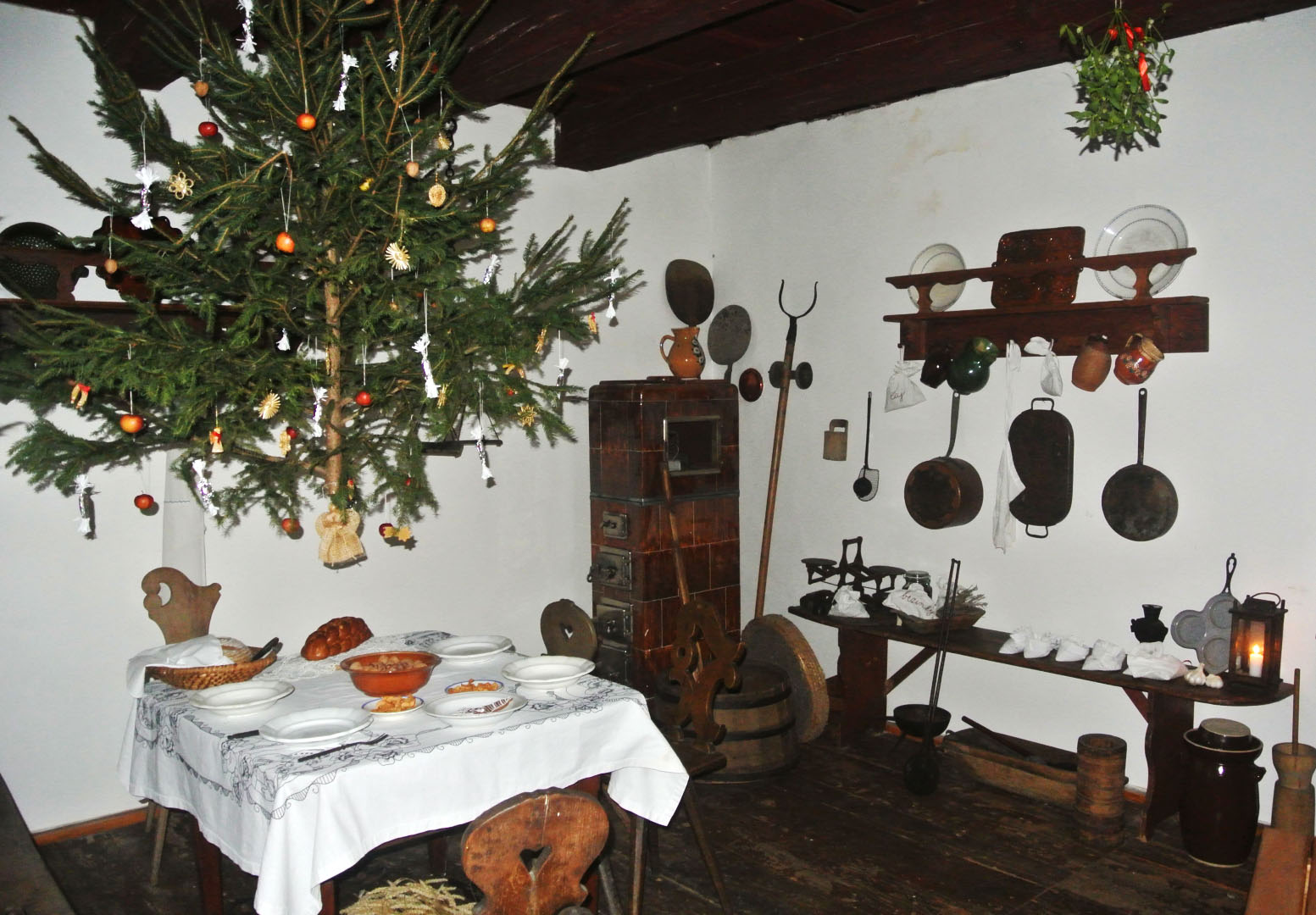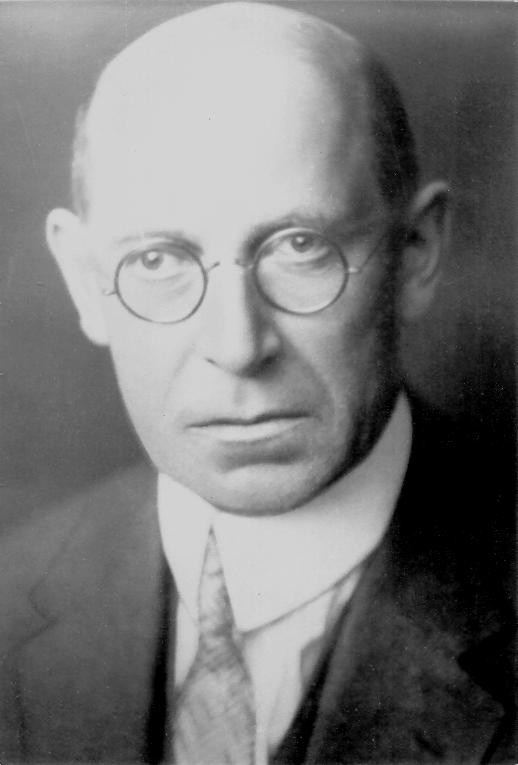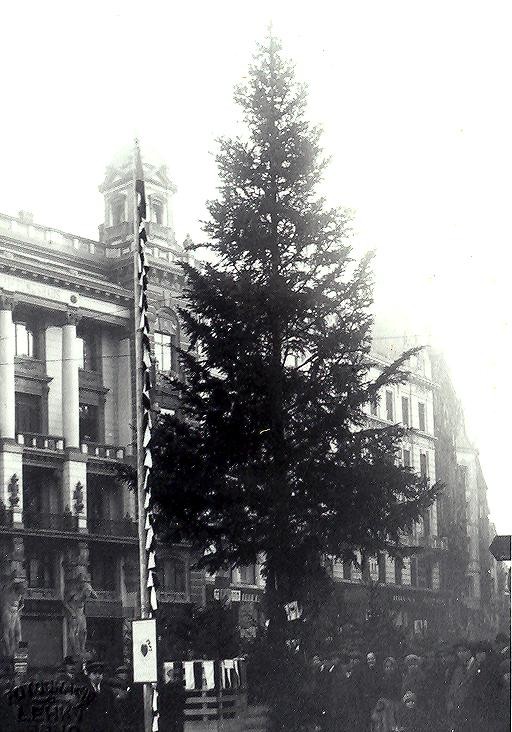It’s hard to imagine Christmas without a Christmas tree. The Czech Republic is no different in this respect, and there aren’t many houses or flats that wouldn’t have a beautiful Christmas tree. But besides the private trees that families put up, there are the public ones you find in pretty much every city, town and village, brightening up their main squares. It’s not often that we can trace traditions precisely to a year and a person, but the tradition of Christmas trees is a rare exception.
The First Tree
The tradition of decorating trees during winter goes back to pre-Christian Pagan days. It was meant to symbolise the gratitude people felt towards nature for providing food for them, as well as the hope that after winter, the bounty of nature will return.
The first tree decorated for Christmas was recorded in Bremen in north-western Germany in 1570. The tradition reached Bohemia in 1812,when German-born director of Prague’s Estates Theatre Johann Carl (or Jan Karel in Czech) Liebich surprised guests at his traditional Christmas dinner with a beautifully decorated Christmas tree.
The tradition took about 30 years to catch on, but by the 1840s it was common, although only richer families could afford a full tree,most had to make do with a decorated evergreen branch. Firs were the most popular originally, but these days pines and spruces are common as well.
Amusingly, the Christmas tree or branch would be placed differently to what we’ve come to expect. It wasn’t standing somewhere in the living room but hung upside down above the Christmas dinner table. It took us about fifty years to get tired of fishing needles out of our food and put it somewhere more practical. We are a patient people, indeed.

A Startling Discovery
Christmas trees were, however, originally a private affair. It was after the First World War that this tradition moved into public spaces, and once again we can name the person directly responsible.
On the 22nd of December 1919, a journalist from Brno (the 2nd largest town in the country now) called Rudolf Těsnohlídek was walking through a forest with two of his friends, painter František Koudelka and court clerk Josef Tesař, when they heard a strange sound they later likened to the sound of a dying doe.

The three men started looking for the source, and when they found it, they were terrified: under a spruce tree they found an abandoned 17-month-old girl.
Her hands were already blue from hypothermia, so they wrapped her up in a coat and started shouting and looking for her parents, but there was no answer. All they could hear was the crystal crisp silence of a cold winter evening.
They brought her to the nearest Gendarmerie station (militarised police of the Republic of Czechoslovakia) and later to a hospital. Her name was Liduška, she recovered, and eventually got adopted by the Polák family, and lived a quiet life until her death at the age of 79 in 1997.
Desperate Times, Desperate Women, Desperate Measures
Her biological mother was Marie Kosourová, who was a maid from a nearby town. During the First World War she’d met a Russian prisoner of war and had a child with him. But as a single mother in post-war Czechoslovakia, she struggled to find work and couldn’t look after the girl. In fact, the baby girl was so malnourished that when she was found her age was estimated at 11 months, rather than the actual year and a half.
Her mother first tried to find help with the Czech Heart organisation in Brno, but when she was turned away, she decided to leave the girl in the woods near where she lived. She claimed in court she’d heard the men approaching and hoped they would find the girl and be better able to help her.
In the end, she was sentenced to five months jail for abandoning her child. It may seem a surprisingly lenient sentence by our standards today, but it only speaks to how unfortunately common such a desperate act was back then.
Hope Under the Christmas Tree
Rudolf Těsnohlídek was a sensitive man, a poet and a writer,who was able to strongly empathise with people he was writing about as a courtroom journalist. The experience with little Liduška shook him to the core and he wondered if there was something he could do to help.
Five years later, he managed to find a way. He had always been interested in Scandinavian countries, he translated books from the area, and he decided to bring a Danish tradition of Christmas-related charity to Czechoslovakia.
With the help of the Czechoslovak Red Cross Organisation he had a tree cut down in Bílovice nad Svitavou, where Liduška was found and where he lived at the time, and brought to Brno, where on the 13th of December 1924 it was raised as the Tree of the Czechoslovak Republic.
The Red Cross started collecting money under this tree, and under trees in other towns that started joining soon after, and the fundraiser was a success. In 1928 they laid the foundation stone for a children’s home Dagmar in Brno, to make sure orphaned or abandoned children would have a place to be safe.
A Bitter Ending
Where the story takes a turn for the worse is in the life of Rudolf Těsnohlídek. His father was a knacker (a person disposing of dead animals), and as his son, Rudolf was from an early age ostracised by the community and his schoolmates.
When he was 19 years old, he saw his friend drown before his eyes and blamed himself for being unable to help him.
He suffered from depression, but in spite of it found love and got married. Unfortunately, his wife died during their honeymoon in Norway. Her death was investigated, but it was never ascertained whether it was a tragic accident or intentional suicide.
He married again, and then, while working as a war reporter in the Balkans, he met a doctor that he introduced to his friends and family. It was for this doctor that his second wife left him soon after.
He experienced happier periods in his life, too. Rudolf wrote a children’s book called Liška Bystronožka (translated to English as “Cunning Little Vixen”). His handwriting was terrible, though, and the printers misread it as “Bystrouška” – from “quick-footed” she became “quick-eared”. Rudolf rolled with it, though, and the book caught the eye of Leoš Janáček who adapted it into a popular opera. It was around this time Rudolf met his third wife, Olga Zámečníková-Vasecká.
Sadly, his lifelong depression got the better of him in January 1928. He didn’t want to burden his wife, and so he went to work as usual. He wrote a poem in place of a suicide note and shot himself in the stomach. He died later that day, aged 45, and when his wife found out, she took her life as well.
Legacy of a Sad Man
Rudolf Těsnohlídek was a tragic figure throughout most of his life. A very sensitive man, he experienced strong feelings of anxiety, hopelessness and pain, both his own and of his fellow people. Maybe it’s that personal experience with tragedy that pushed him to try and help the most vulnerable children in the direst of circumstances.
He never got the chance to see the orphanage that his actions helped create – it was finished in 1929, the year after his tragic suicide.
Today, however, there are many charity collections happening under public Christmas trees around the country. The tree at the Prague Castle, for instance, is supporting a charity that provides support for children in various difficult situations.
I’d like to think that Rudolf would be proud to see that he started something beautiful, a tradition that’s helped countless children since that freezing day on the 22nd of December 1919.



